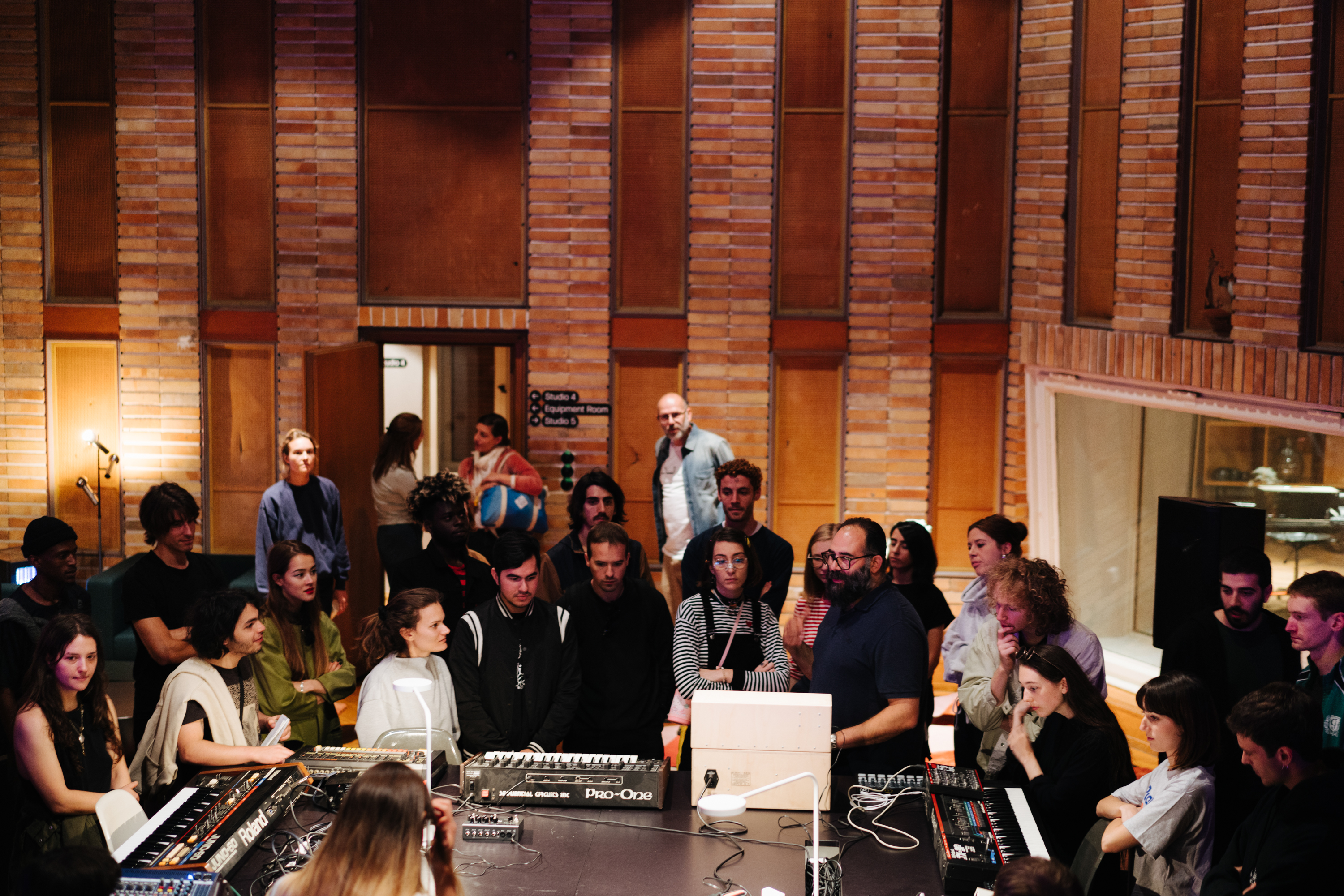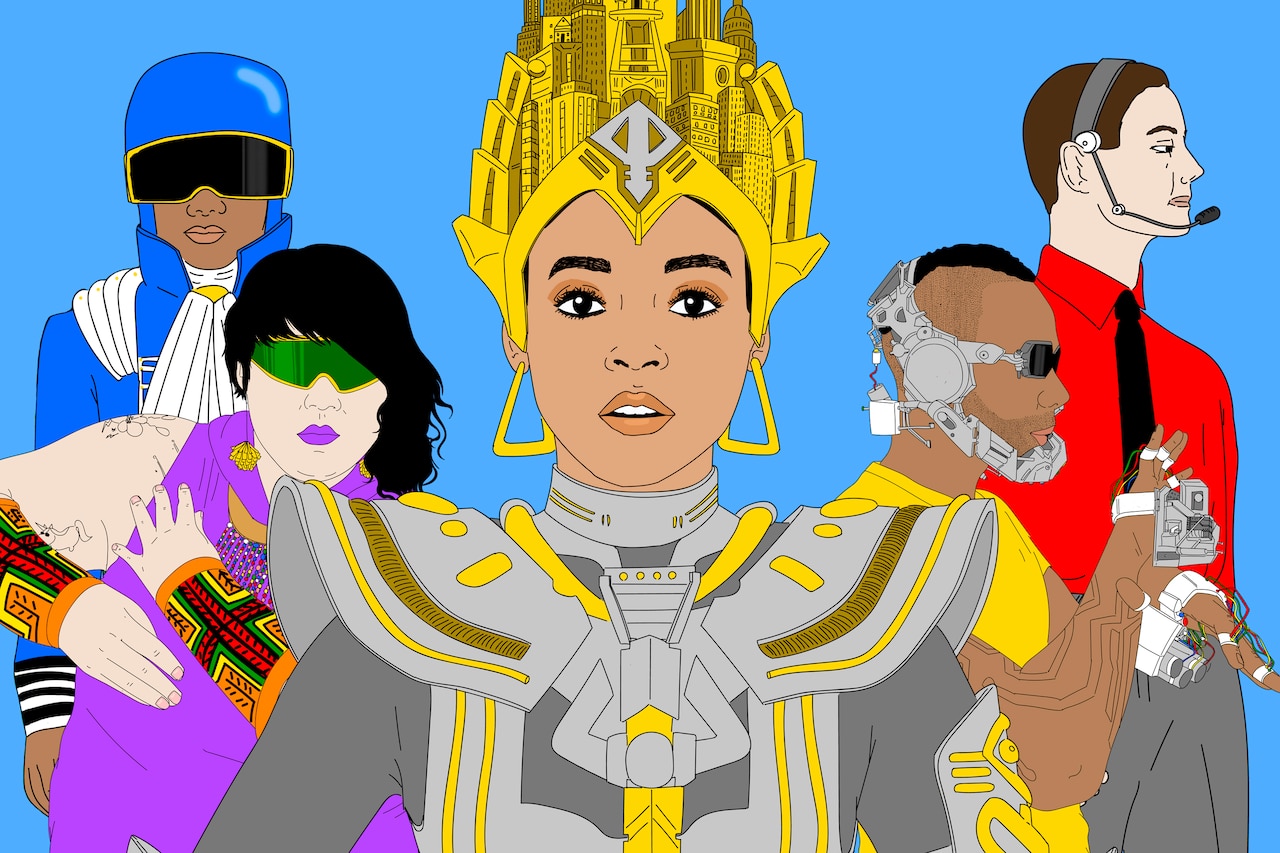
How Cyborgs Took Over Popular Music
Dig into the history of musicians who have fused their identity with technology
While advances in astrophysics over the past five decades have Higgs-boson’d along, down in the internet’s dark matter funk, everyday life has gone through its own interdimensional transformation. This hyperreal present goes by many names: the post-fact period, for example, or the age of integration. But no term speaks to the proliferation and increasingly excessive use of reality-bending platforms like Snapchat and Instagram – not to mention the widespread accessibility of VR hardware, wearable tech and body implants – than what tech writer Mike Wadhera and many others have deemed the “Experiential Age.” Our online lives are no longer an accumulation of text-based thoughts, but a first-person showcase of bite-sized, looping life-images curated to fit the perceived expectations of a communal whole. The human-machine integration process is not nearly complete, but as we grow more comfortable expressing our identities through technology, it stands to reason that a new generation could look and act a lot more like cyborgs.
As an umbrella term, cyborg (a portmanteau of cyber and organism) refers to a fictional person who’s extended their human capabilities by fusing their body with technology. The next dimension to be explored is not upward but inward; transhumanism as a field of study is already accounting for our gradual transition into cybernetic or digitized bodies. Luckily, the speculatory soundtrack for such a transition has already been laid on wax.
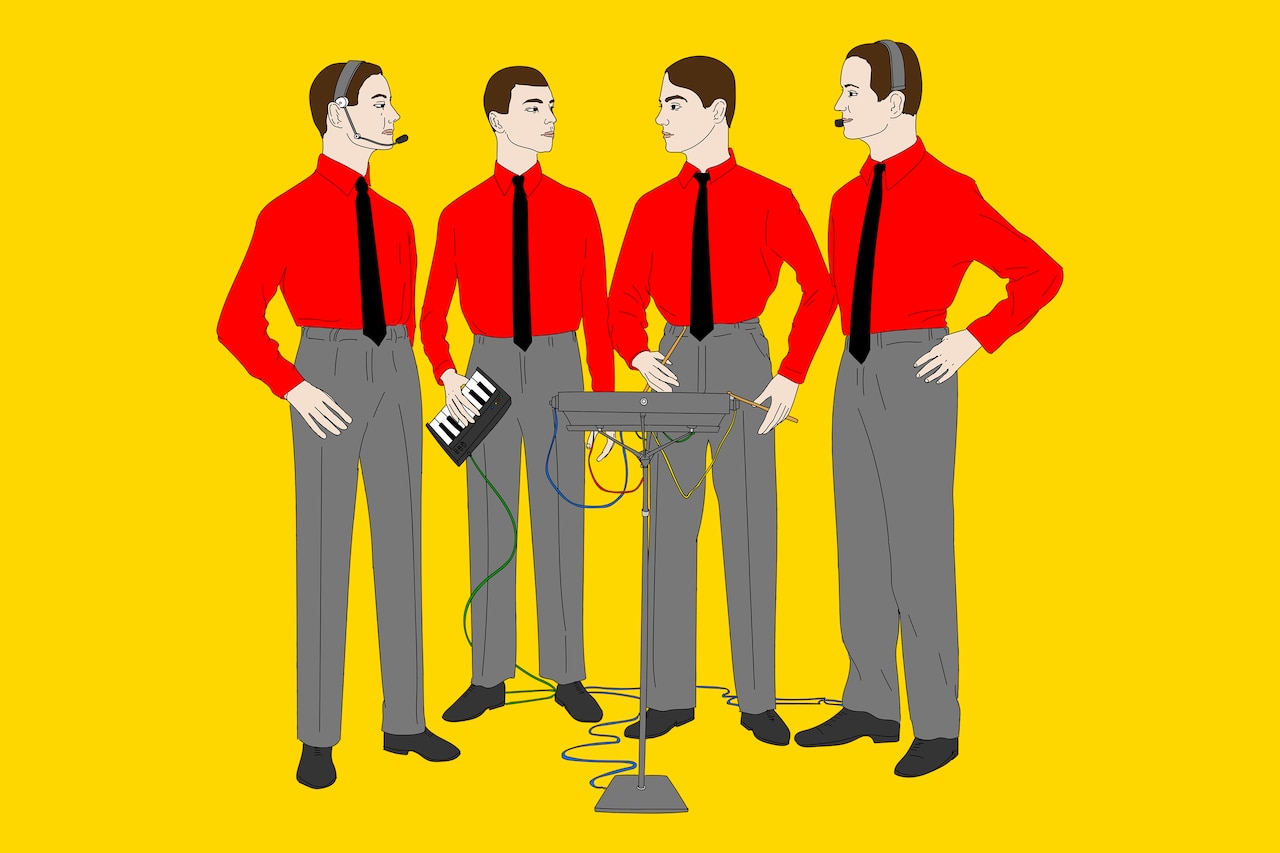
Musicians are naturally innovative tinkerers who use modern technology to extend the range of human expression. Cyborg aesthetics and ideas have cropped up in a range of genres, from Kraftwerk’s synth experimentation to the post-funk/early hip-hop kitsch of the Jonzun Crew and Janelle Monáe’s bendy, orchestral pop-soul. These artists – unlike Prince and David Bowie, who typically only tried on droid-like, alien aesthetics to make one-off statements – embody the chaotic self-fashioning that feminist scholar Dr. Donna Haraway described in her Cyborg Manifesto in 1984. Like the hybridized identities Haraway writes of, Kraftwerk, Monáe and the others are “creature[s] of social reality as well as a creature of fiction,” who in turn exist as an “argument for pleasure in the confusion of boundaries and for responsibility in their construction.”
Musicians are naturally innovative tinkerers who use modern technology to extend the range of human expression.
Cyborgs and cyborg identities are built using the tools – real and conceptual – specific to their time. Kraftwerk, whose name means “power plant” in German, were some of the first musicians to explore what it meant to truly be automated in the 20th century. Their framing as organic cogs in a music machine – namely, their Kling Klang Studio, where they wrote all their albums – directly reflected a resurgent German musical identity finally out from under America’s radio dominance. “The German people were robbed of their culture,” founding member Ralf Hütter told Lester Bangs in 1975. “I think we are the first generation born after the war to shake this off...We are the first German group to record in our own language, use our electronic background, and create a Central European identity for ourselves.”
Kraftwerk’s man-machine mystique was instrumental in creating their classic trilogy of cyborg records: 1974’s Autobahn, 1975’s Radio-Activity and 1977’s Trans-Europe Express. By 1978, the band finally had the funding from their record label, Phonogram/Mercury, to bring their hybrid human-synthesizer ethos to life in a concert setting. Kraftwerk added remote-controlled lasers, strobe lights and a massive floating Autobahn to their live performance. The shtick worked: Kraftwerk inspired groups like Devo, Neil Simon and even Coldplay (on their album X&Y) to experiment with sci-fi ideas in their songwriting. Devo’s track “Mechanical Man,” for example, owes its glitz and guts to Kraftwerk’s stylings even if Devo lacked the German band’s eye for theatrics. Other artists, including the aforementioned Bowie, have borrowed heavily from their idiosyncratic art and presentation.
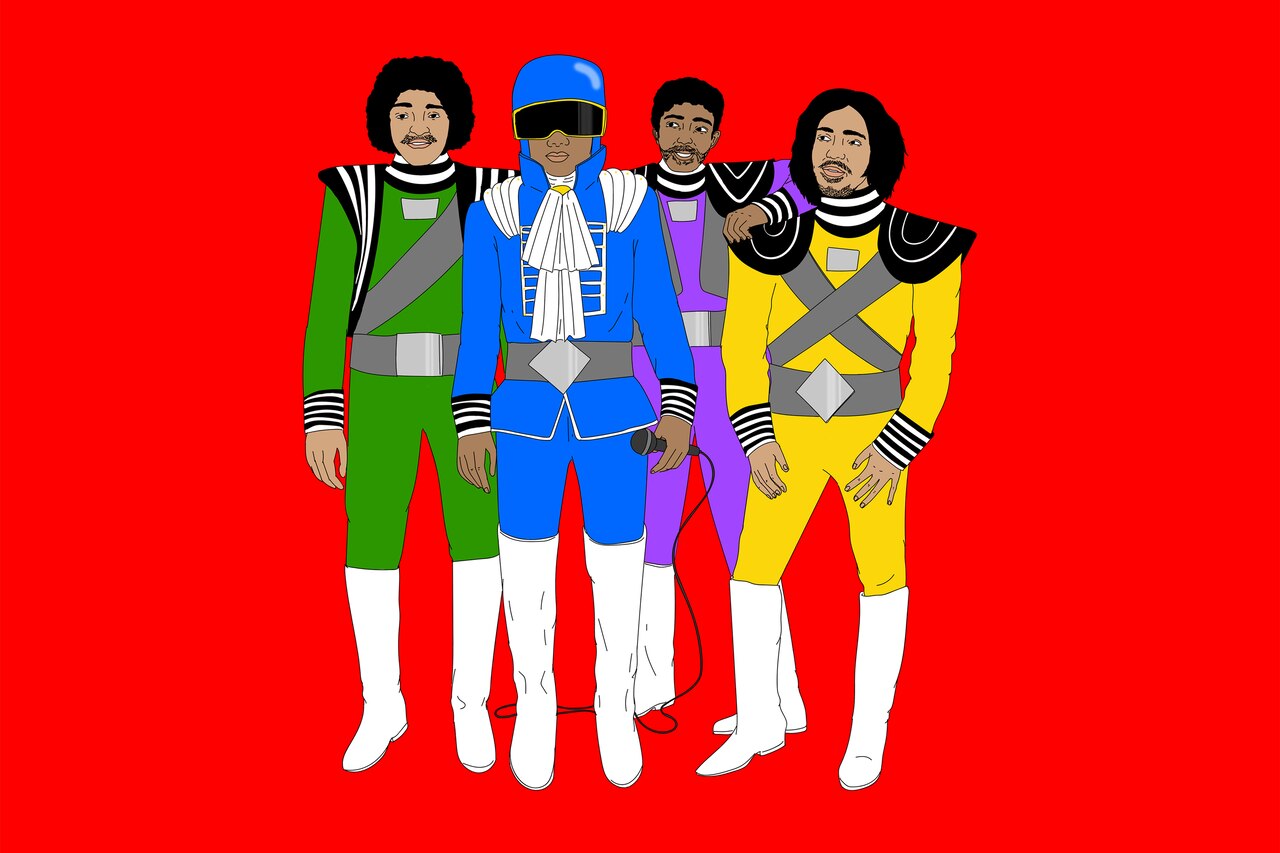
But even more powerful was Kraftwerk’s influence on early hip-hop. Dipping into Trans-Europe Express’s well of kaleidoscopic mechanical sounds, hip-hop virtuosos like Dr. Dre, J Dilla and De La Soul repackaged the German group’s plodding, steam-powered percussion into bouncy breakbeats upon which legends were bred. But predating all of their efforts – and three years before hip-hop godfather Afrika Bambaataa and the Soul Sonic Force interpolated Trans-Europe Express in the culture’s most consequential record, Planet Rock – was Boston’s electro-funk outfit, the Jonzun Crew. In 1983, Michael Jonzun and his brothers Maurice Starr (who would later write for New Edition and co-found New Kids on the Block) and Soni Jonzun released Lost in Space, an album that foretold the magnetism of human-machine duality in hip-hop, and in black music more generally.
Advances in voice modulation extended the precocious yet highly technical modes of early rap.
Lost in Space is one of the more cohesive projects in hip-hop’s infancy. Advances in voice modulation extended the precocious yet highly technical modes of early rap. Jonzun Crew utilized the traditional polyrhythmic layering, sampling and breakbeats fundamental to hip-hop’s formation, but it was their robotic voices that highlighted both the culture’s entrenchment in industrial city centers and its futuristic outlook. Deteriorating urban landscapes in the postindustrial era found these early hip-hoppers speaking to the dystopian vision outside their windows. Odd country/funk crossover tracks like Lost In Space’s “Space Cowboy” and “Pack Jam” harkened back to Kraftwerk’s hybridized methodology, but also birthed new sonic prospects. The Jonzun Crew’s groovy synths prophesied ’90s hip-hop stars like Dr. Dre and Outkast who took the synthesizer straight to the vocal cords, and influenced house music dons like Steve “Silk” Hurley and electro-dance acts including Chromeo. Ultimately, the band suffered in terms of timing. Between the whirlwind of Parliament’s Mothership Connection and hip-hop’s coming hurricane, the Jonzun Crew just couldn’t keep up. But the stage had been set: The twin pillars of today’s pop music, electronic dance music and rap, owe more than a nod to those pioneering muhfunkers.
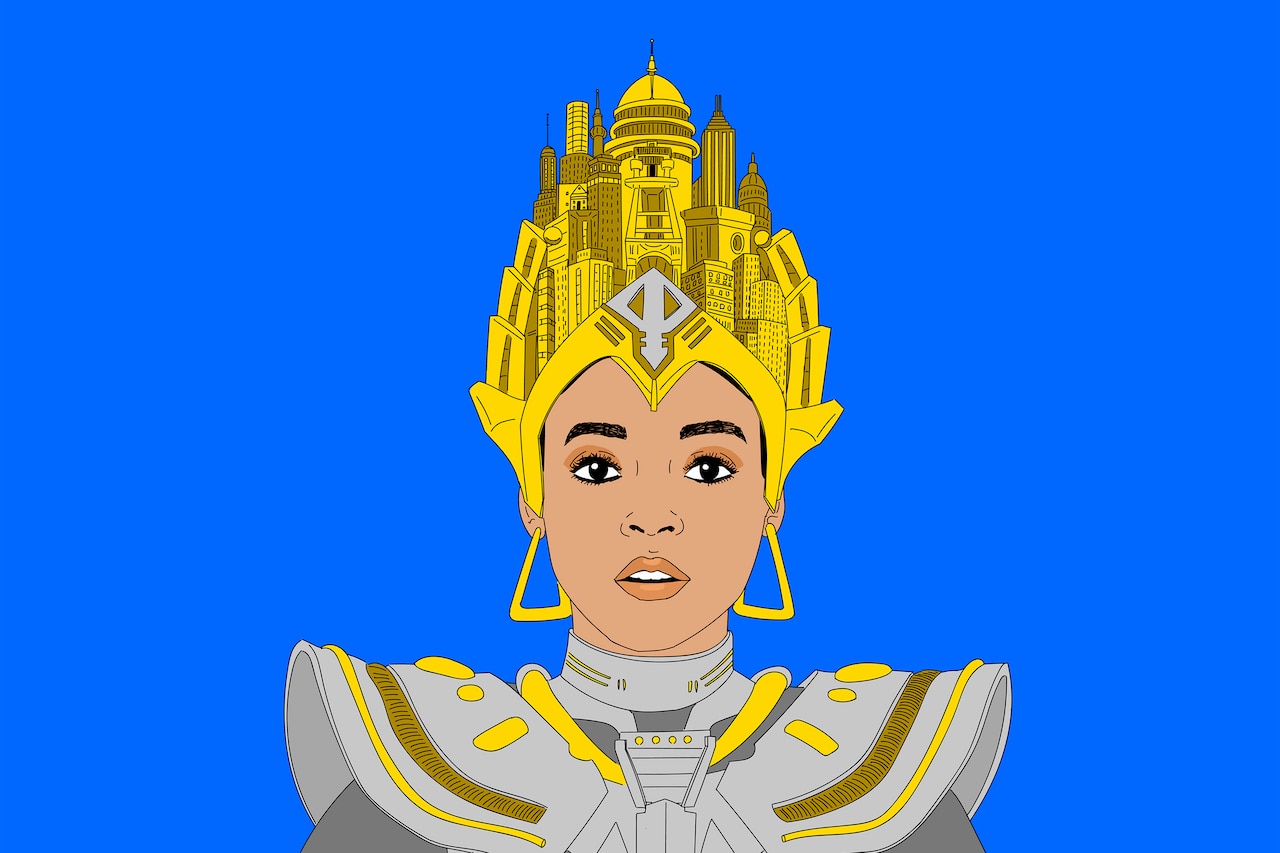
The Information Age rendered once-marginal musics accessible to anyone with a decent internet hook-up, opening the door for more diverse models of cyber integration. Until that point, the primary mode of sonic cyborging consisted of manipulating electricity to imbue the voice with a kind of extended character (that could then be embodied by the performers themselves), but the 21st century allowed artists to think in more complex ways about the possibilities of the extra-dimensional human. Contemporary artists like Janelle Monáe, Mother Cyborg and Onyx Ashanti imbue the cyborg identity with a political sensibility and visceral practicality that goes beyond mere performance.
Perhaps the most popular dual being in our current landscape is Chief Operating Cyborg, Janelle Monáe. At the beginning of her career, Monáe’s enigmatic cyborg persona subsumed her work: from her Afrofuturist album art to the decoration of her studio with sixty clocks, all set to different times to open up possibilities for its visitors to follow their own “soul clock.” Monáe’s monastic devotion to a black and white uniform and pompadour was both a shout-out to her working-class upbringing and the seriousness with which she conceived her alter-ego, Cindi Mayweather. When hitting the stage, Monáe routinely introduces herself as Cindi, inviting audiences into a pulsating, time-traveling narrative that spans nearly her entire musical career.
Unlike the repetitive melodics and bleak emotional tenor of Kraftwerk, Janelle Monáe’s cyborg manifestation is vivid, flexible and experiential.
Mayweather plays the leading role of android savior in Monáe’s ArchAndroid record arc, which consists of The Chase EP and two albums, The ArchAndroid and Electric Lady. Mayweather is a character, but she’s also an intrinsic part of how Monáe conceptualized her artistic and musical identity. She danced, loved and wailed like no other human-robot hybrid, and that is what made her special. Songs like The ArchAndroid’s “Say You’ll Go” and Electric Lady’s “Dance Apocalyptic” posited Mayweather’s blooming rebellious identity as crucial to a revolution built on love in a crumbling world. It’s the appreciation of her own multiplicity, not the fear of a world at war, through which Monáe constructs her fictional counterpart’s identity. And unlike the repetitive melodics and bleak emotional tenor of Kraftwerk, Monáe’s cyborg manifestation is vivid, flexible and experiential.
Monáe's most recent transmission, Dirty Computer, unpacks the confluence of identity – in her case, her racial and sexual identity as a black queer person, and her ties to the nation-state as an American – in both the bodily and digital realm. Unlike her previous LPs, on which she calls Cindi a “mediator” between the now and the coming tomorrow, Monáe only winks to her alter-ego on the new record. Perhaps she no longer needs her: In 2018, Monáe is a household name for her starring roles in the Oscar-winning Moonlight, and as NASA engineer Mary Jackson in Hidden Figures. On Dirty Computer, her character is free to sit somewhere between Janelle and Cindi, reflecting on the mask she used to wear while still navigating the implications of what it means to be considered a fully free human in the 21st century: “Even though you tell me you love me / I'm afraid that you just love my disguise / Taste my fears and light your candle to my raging fire / The dirty desire.”

There is still so much mystery to unlock in the cybernetic body. New artists like Detroit electronic musician Mother Cyborg, who calls herself a “3souled hybrid being,” carry the torch for the transformative power of the dancefloor. Her three souls, she writes on her Bandcamp page, “[come] from this idea that each portion of a hybrid carries its own spirit/soul. 1 as a cyborg, 1 as a human, and 1 as the hybrid.” As she continues, it “also alludes to the many things women have to be to navigate the world.” In plotting a course towards understanding the contours of those three internal beings, she ponders a new kind of code-switching. On the fiery “3Souled Women” from her debut futurist album, 2017’s Pressure Systems, she asks, “Could I pass as your human?” following a self-examination of her own body and “external brain” from top to bottom. Pressure Systems is packed with these kind of abstract self-interrogations that quickly twist into declarations of strength and power. And sonically, it shreds: drums are draped in high-pitched sonic exhaust fumes, which makes the music itself feel like a walking, breathing machine.
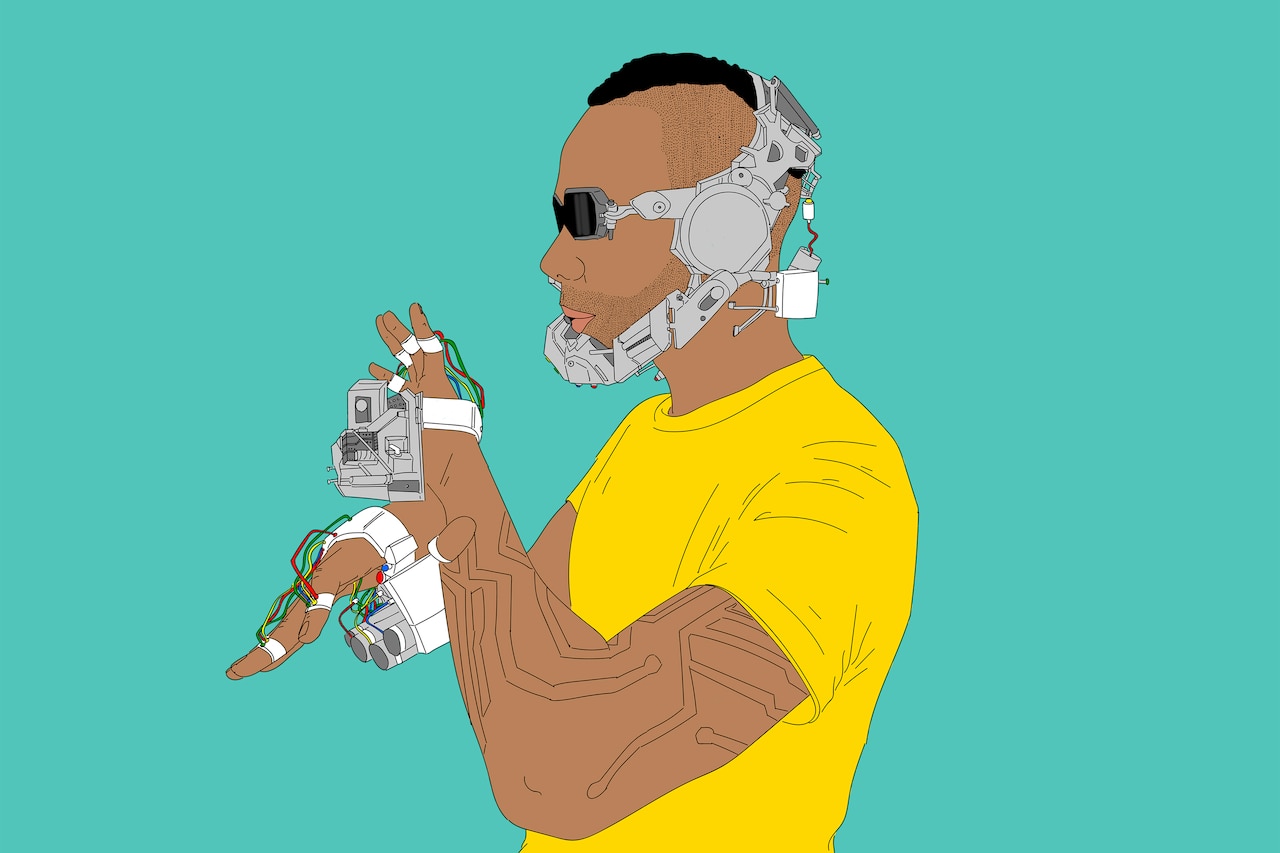
Fellow Detroit-based musician Onyx Ashanti explores the metallic tones already existing within the range of the voice while turning his body into a new type of instrument. The Afrofuturist uses a homemade 3D printer constructed out of recycled electronics to create wearable computing interfaces – in the forms of gloves, necklaces, crowns and masks – to effectively program himself into sound. With every movement, his limbs and breath generate an audio atmosphere which he then records, turning nebulous warbles into bizarre yet functional music. If Onyx Ashanti’s process stands as an example of how one can use the limited resources surrounding them to radically expand the spectrum of human expression, the cyborg future might be hurtling towards us a lot faster than initially conceived.
Cyborgs, both real and imagined, embody the ever-present impulse for humans to reinvent themselves. Whether representing a new hybrid being or the transcendence of humanity into the coming technological singularity, human/machine duality has been an integral part of music-making for the better part of a half-century. And with every innovation comes a host of new questions about how cyborgs will look, act and manifest musically in the future. Wholly virtual beings like Lil Miquela, a digital avatar who just “collaborated” with New York producer Baauer on the track “Hate Me,” push the complicated question of what exactly it means to be an organic being living in a digital realm to the fore. In an age that emphasizes not just experiencing our lives through the internet but allowing tech to learn from us, exploring one’s cyborg potential seems a crucial step to maneuvering toward the new tomorrow. So plug in: The new cybernetic destiny lies within.
Header image © Anna Rupprecht

